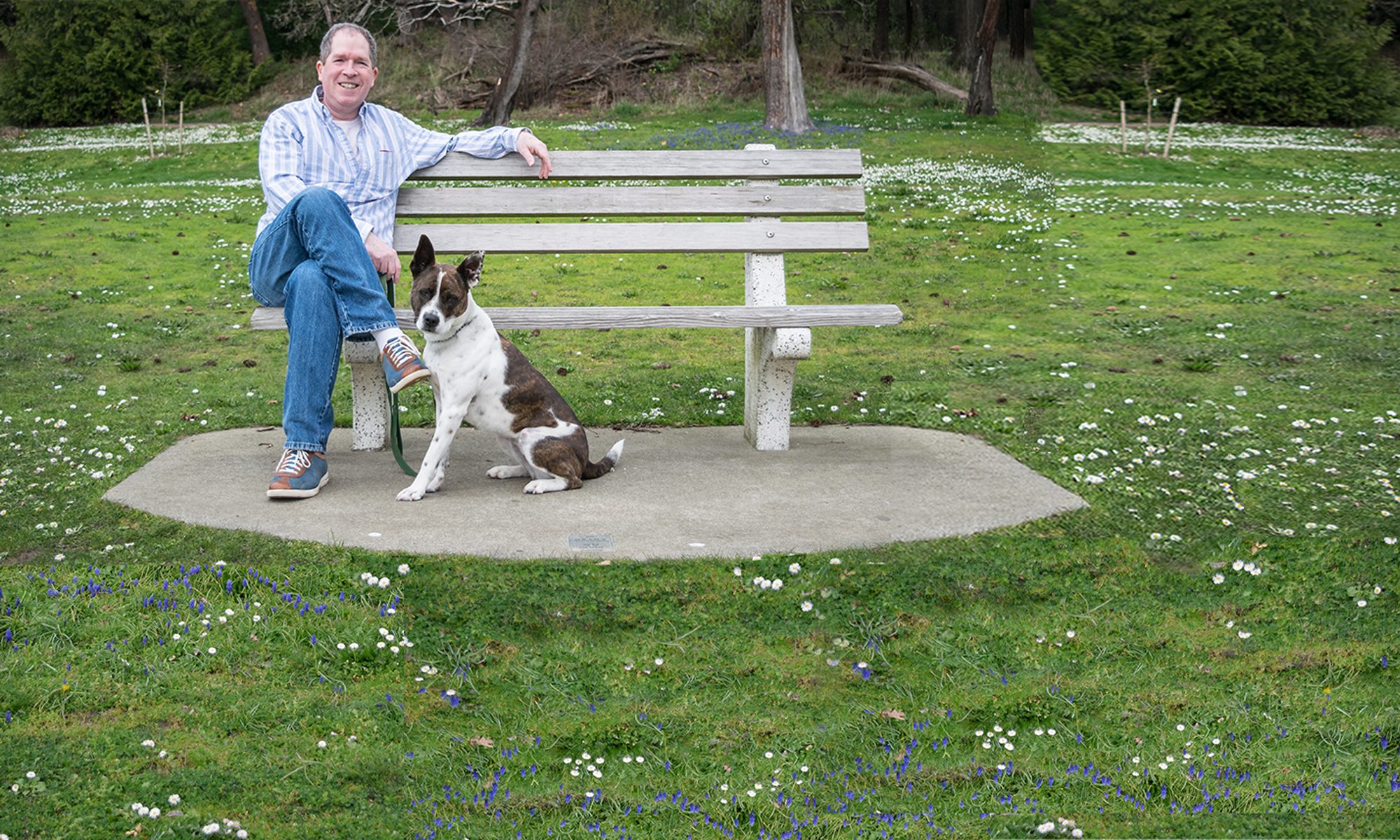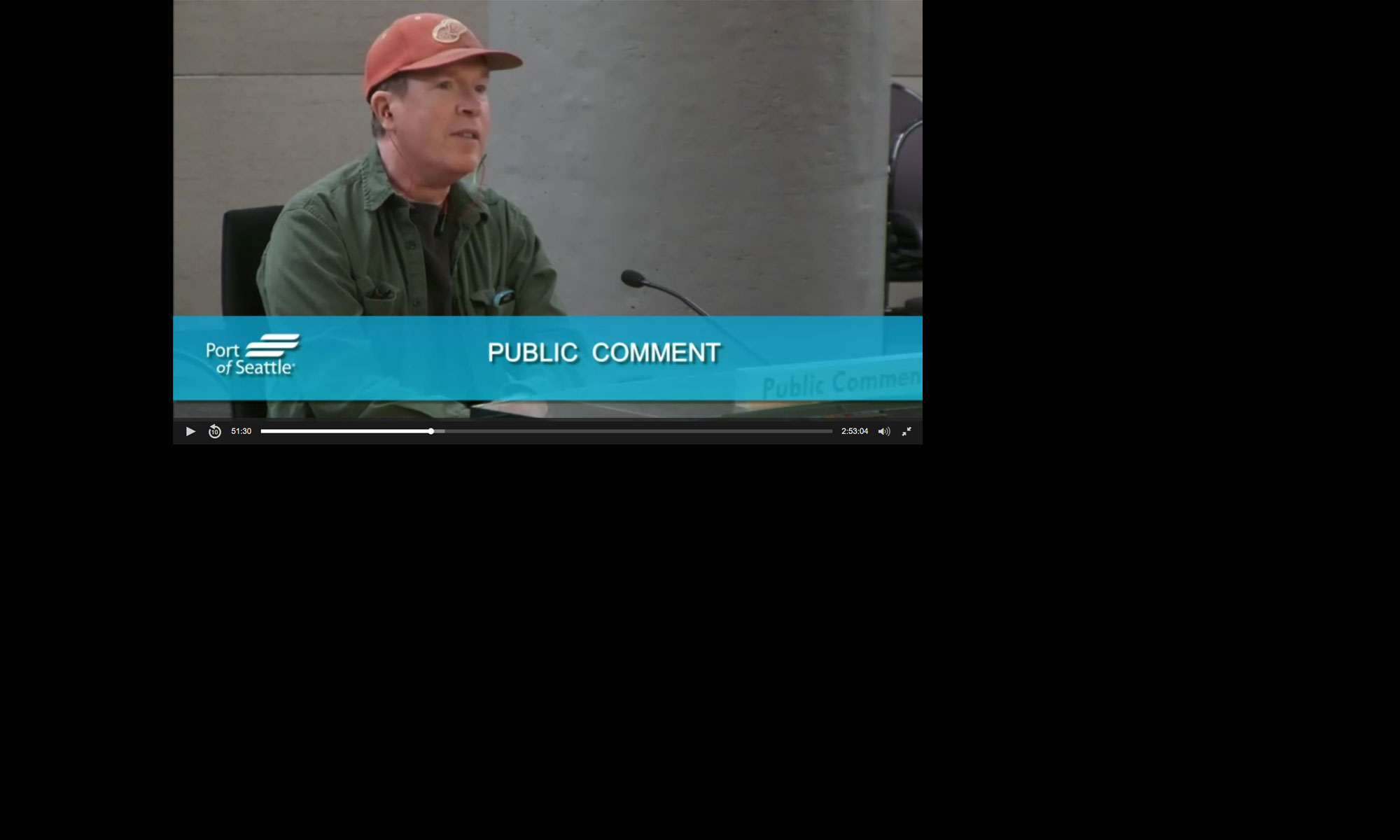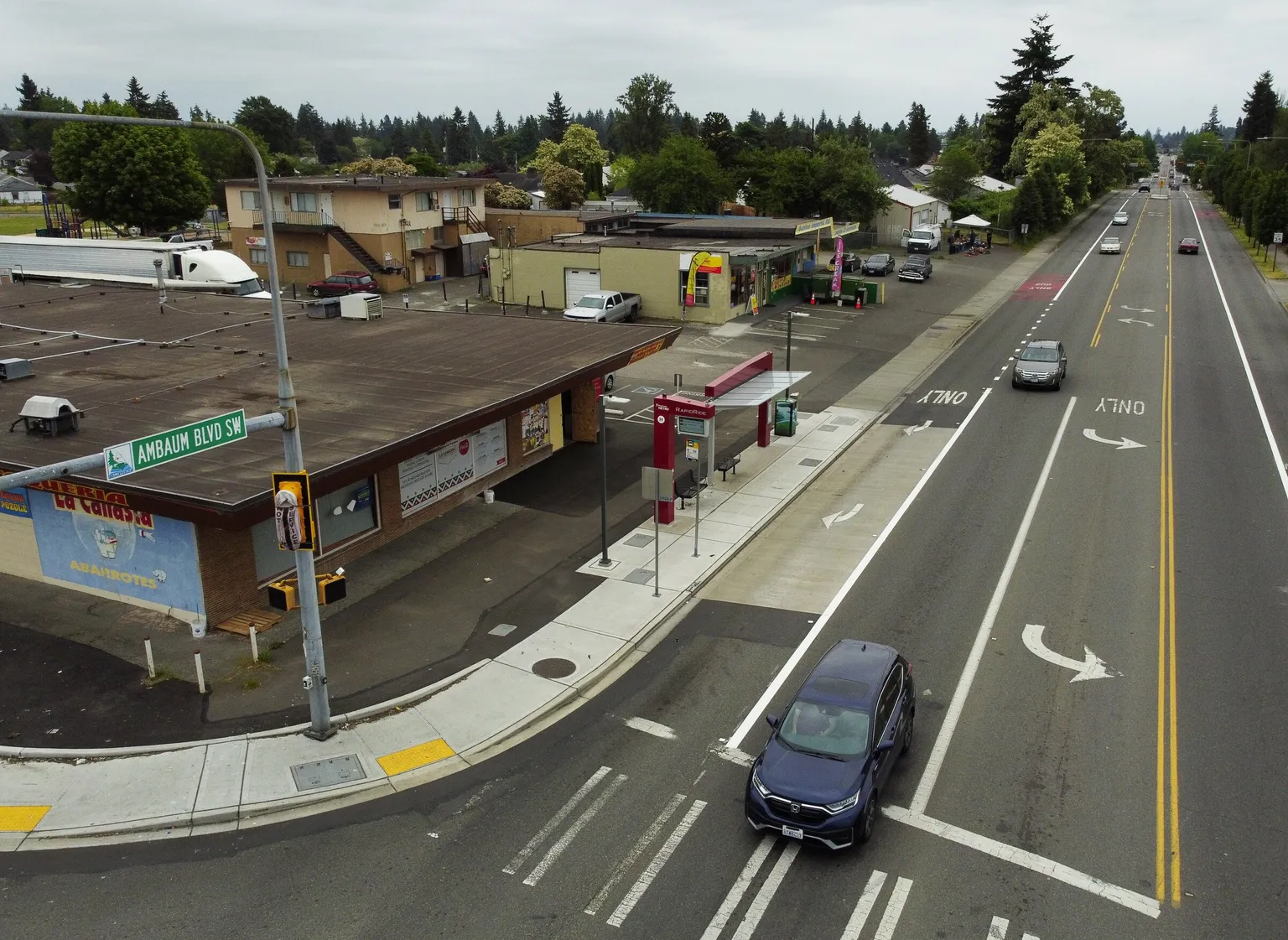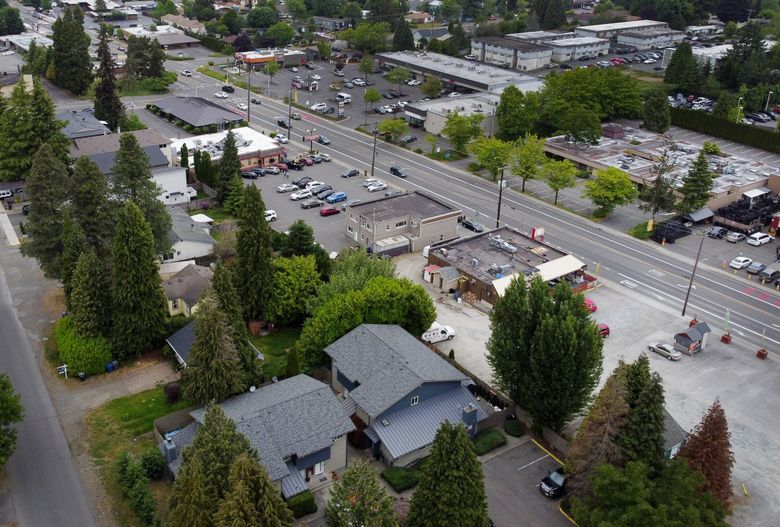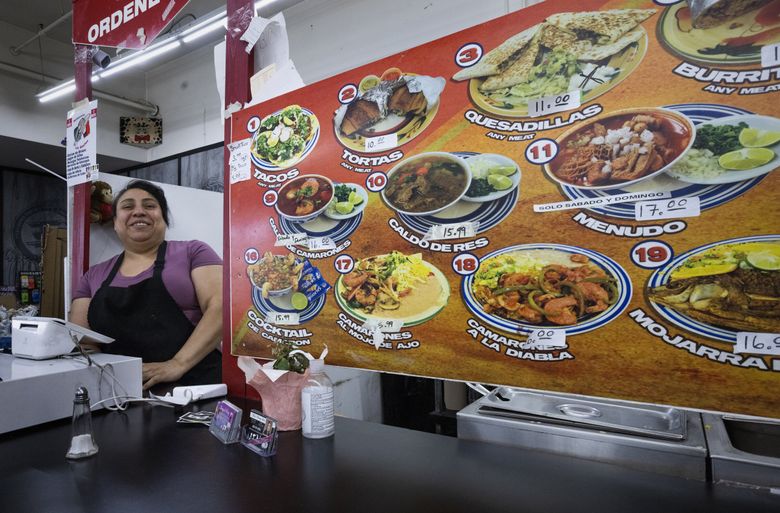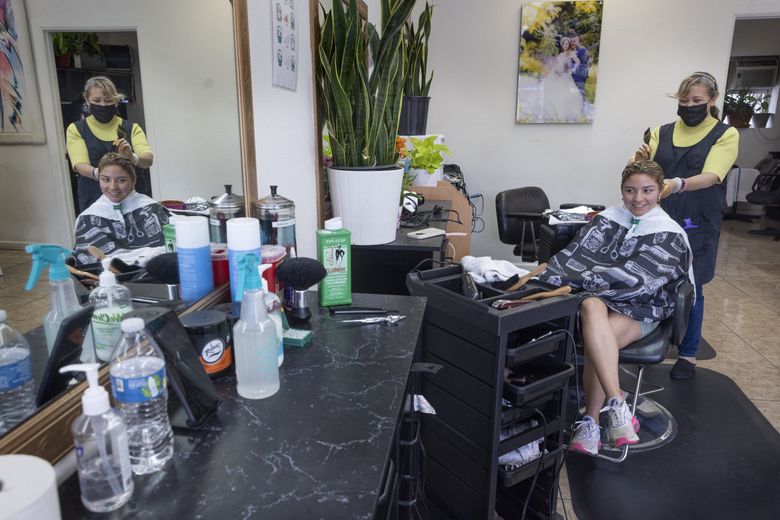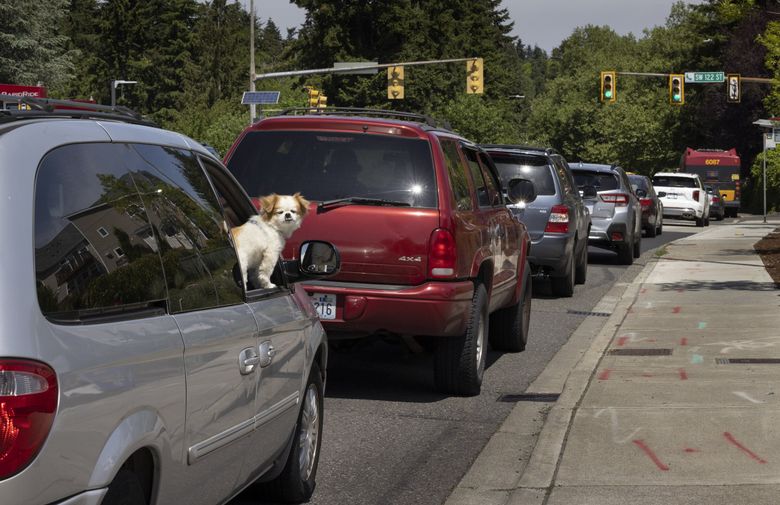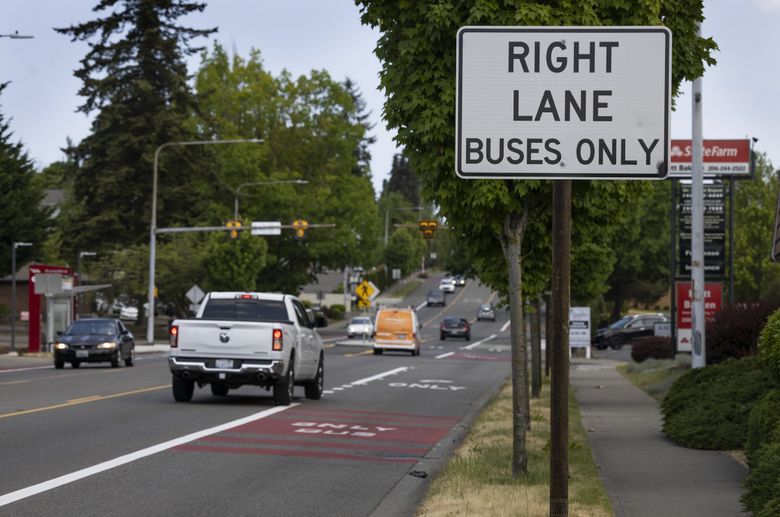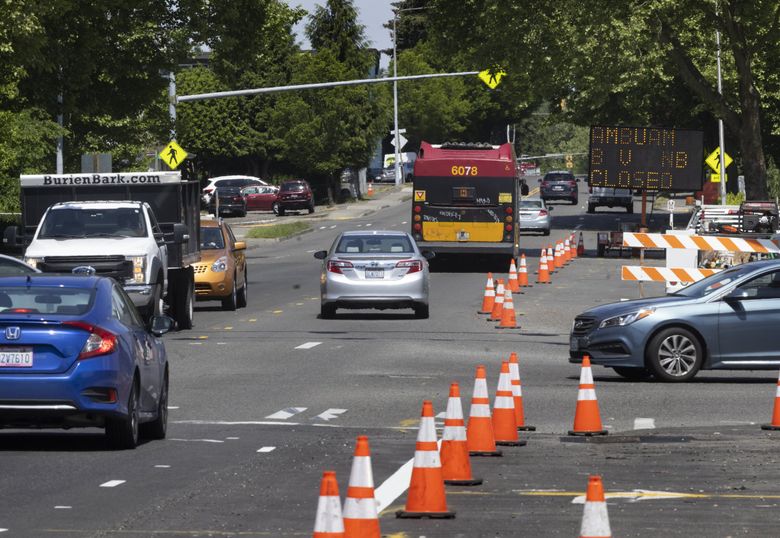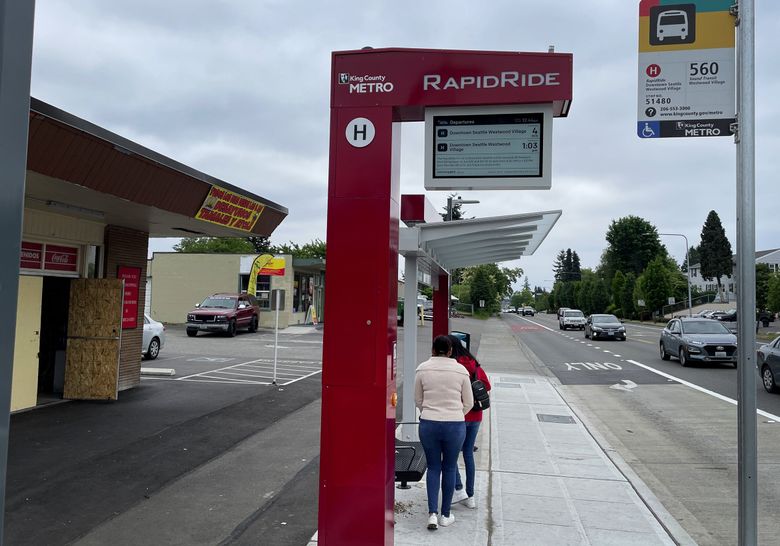BURIEN — He saw this conversation coming.
Before Travis Thompson sold out concerts, signed with a major record label and embarked on a European tour, the Burien-raised rapper wrote about change coming to Ambaum Boulevard Southwest.
“Won’t always be a man on the corner slinging that roasted corn … Won’t always be my mom at the house saying, ‘There’s room for more,’” Thompson sang in 2016 on “Ambaum,” an ode to the city’s north-south arterial. “And I’m cool with that, I swear I am. I just hope they don’t forget us when they tear it down, and make high-rise homes, and send us packing now.”
The ambivalence voiced in the song is exactly what Burien politicians are agonizing over today, as they contemplate a community growth plan and potential zoning changes that could reshape the corridor, a 3-mile stretch of houses, low-slung apartments and business strips studded with Latin American stores and restaurants. So much so that city staffers included Thompson’s “Ambaum” lyrics in the plan they presented to the City Council last month.
The boulevard has already started to evolve, getting a yearslong remodel to accommodate King County Metro’s newest RapidRide bus route, the H Line, which opened in March between Burien and downtown Seattle. Bus lanes carpeted with red paint have been installed along much of the corridor to speed up trips for transit riders, relegating regular motorists to one lane in each direction as they travel south to downtown Burien or north to White Center and West Seattle.
Next, the community plan could bring additional investments to Ambaum’s sidewalks, parks and commercial hubs, and the zoning changes almost ready for consideration by the council could set the stage for a housing spurt.
Unlocking the length of Ambaum Boulevard to multistory mixed-use buildings and rezoning the surrounding blocks for denser construction could allow the corridor to add up to 2,500 net housing units by 2044, according to a review by the city, which is contemplating tax exemptions and height bonuses for projects that incorporate affordable homes and business spaces.
Residents and business owners say they’re excited about the possibility that Ambaum could become a safer and more walkable community, brimming with cultural activity and more customers. At the same time, they say they’re worried about the housing cost increases, traffic jams and demolitions that sometimes accompany infrastructure upgrades and development.
“It’s a major transportation corridor … , but it’s also one of the most diverse areas of Burien and there are a lot of beloved businesses and people,” said Alex Hunt, a senior planner for the city. “So we have to be sensitive.”
Similar debates have been playing out in other Seattle-area communities, from Lake City in the north to Skyway in the south, putting pressure on policymakers to strike the right balance between progress and preservation. Though a cooling real estate market could reduce that pressure for a while, development is bound to heat up again. Leading a small city squeezed between Seattle and Tacoma can feel like “being eaten by a boa constrictor,” said Burien Councilmember Sarah Moore.
“I know that things need to change, that people need more apartments,” said Reyna Gallegos, a mother of seven who’s lived on Ambaum Boulevard for more than a decade and who pays $950 a month with her husband for their 2-bedroom home. “I hope the apartments are not too expensive for the people.”
The council could take votes as soon as later this summer.
Recent history
Few people know Ambaum as well as Roxana Pardo Garcia, a community advocate who grew up there and still lives close by. Pardo Garcia has spent countless hours watching soccer in Chelsea Park, chatting with clients at Fantástica Beauty Salon and mentoring kids in the New Futures program, which caters to the residents of Alcove at Seahurst, a sprawling complex of 500-plus apartments distributed among 44 buildings erected in 1948.
The park, salon and apartments are clustered at Ambaum and Southwest 136th Street, along with restaurants and stores that cater to the many Spanish speakers who live in the area. La Canasta. Buena Market. Los Guillenes Taqueria. Pasteleria Y Panadería La Ideal. Burien’s population of 51,000 is majority people of color and almost 25% Hispanic or Latino, per census data. The city hired Pardo Garcia to help collect input about the corridor’s growth.
“This is where our community is created,” said Pardo Garcia, sitting at a picnic table overlooking Chelsea Park’s scruffy baseball diamond. “It’s not just a neighborhood that exists on a map. There’s history here.”
The city decided to sketch a new vision for Ambaum a couple of years ago, partly in response to the H Line project, partly to help address the region’s housing shortage and partly because the corridor’s current zoning is an outdated hodgepodge, having received scant attention since Burien annexed a previously unincorporated stretch of the arterial in 2010, Hunt said.
“It’s a street that’s stuck in time” and that’s just now waking up as Burien urbanizes, said Councilmember Jimmy Matta, who lives near Chelsea Park.
Though the Ambaum corridor’s aging apartments and modest bungalows have provided a relatively inexpensive landing pad for immigrants and people priced out of Seattle, some of the community’s sidewalks are narrow or missing (even with H Line-related improvements), its parks are showing wear and its residents have been traumatized by sporadic violence, including a series of deadly teenage shootings from 2016 to 2018.
Some parcels along Ambaum Boulevard are zoned for the street’s existing apartments, while others are zoned for drive-thrus and strip malls. Still others are zoned for medical and office buildings. Because a number of properties are vacant or underused, zoning changes could encourage developers to “fill in the gaps” with new housing close to transit, Hunt said.
Some motorists have grumbled about congestion caused by the H Line’s construction and the new street design; Councilmember Kevin Schilling has been inundated with those complaints, he said. But Pardo Garcia said people who live along the arterial are mostly happy with the modifications, which have helped to slow and separate vehicles from pedestrians.
“The biggest concern was feeling safe,” with neighbors requesting better lighting, more art and more activities in public spaces increasingly being used by people without shelter and people in crisis, Pardo Garcia said.
“People were also very vocal that they did not want to leave their homes. They want the city to mitigate displacement. They want to be able to stay.”
Special place
Part of what makes Ambaum special is the business owners who have cultivated connections with residents over decades.
Like Mariana García from Fantástica, Pardo Garcia’s aunt, who specializes in hair and makeup for quinceañeras and weddings, and like Victoria Plancarte Orosco from Taqueria Los Guillenes, who sometimes serves people who can’t pay because she doesn’t want to see them go hungry.
Both launched as microbusinesses inside La Canasta, a Mexican and Latin American market at Ambaum and 136th, before they had the ability to strike out on their own. The cooks at Taqueria Los Guillenes work from scratch, grinding sesame seeds, chilies, chocolate and other ingredients to make móle, Plancarte Orosco said. Women bring their daughters to Fantástica, then their granddaughters, García said. Some clients have become her friends.
“I feel that God gave me this gift and I have a strong love for helping people feel good about themselves and raising their self-esteem,” said the salon owner, who got her start cutting hair on a ranch in Mexico’s Michoacán state.
What Ambaum’s business owners need from the city is a sense of security, García said, mentioning break-ins at her salon. A center for people experiencing homelessness could help, Plancarte Orosco suggested.
What they don’t want is to lose the niches they’ve spent decades carving. Rents are rising already, García said. When officials talk about all the great things they plan to do, they don’t always mean to include “us,” she said.
Many Ambaum residents are uneasy, too, said Norma Ortiz, who manages the New Futures youth program in the Alcove at Seahurst complex. They’re not plugged in to local politics, but they know what tends to happen when a neglected area gets attention at last. The Alcove complex, where Ortiz lived until a recent rent hike pushed her out, sold last year for $119 million.
“They’re asking those questions,” said Ortiz, who connects kids with homework help and art projects after school. “Everything is getting nice, so how expensive is it going to be? … Do I need to have a Plan B, and when?”
Policy choices
The Ambaum and Boulevard Park community plans that are waiting for approval by the City Council include more than three dozen recommendations in three categories: place-making, safety and development.
Some are broad, like asking the city to “encourage and support community events” and to plant more street trees, while others are pretty specific, like a walking loop at Chelsea Park and a walk-bike path along Eight Avenue Southwest. Many of the recommendations, like facade makeovers for stores and additional youth programs, will cost money and take time. But setting the vision into law should help Burien secure grants to pay for the upgrades, said Susan McLain, the city’s community development director.
The potential zoning changes are more touchy, because new buildings could put Ambaum renters at risk for displacement and because some homeowners off the arterial are objecting to high-density zoning on their blocks.
The preferred scenario studied by the city would rezone Ambaum for mixed-use development (housing above commercial spaces, most likely), allowing three to five stories in some spots and six to eight stories in others. The scenario also would rezone blocks east and west of Ambaum where detached houses are the norm today, allowing three to four stories (think town houses and small apartment buildings) on most and six to seven stories on others.
The council could pass a “planned action ordinance,” alongside zoning changes, to give projects in the area expedited environmental approvals
Burien’s consultants conducted their zoning and environmental review before state lawmakers passed a bill in April that will require cities like Burien in the coming years to allow at least two units per residential lot everywhere and at least four units within a quarter-mile of major transit stops.
Homeowners from Southwest 132nd Street have turned out for public meetings recently to ask for less dramatic changes on their blocks east of Ambaum Boulevard, warning that more traffic could endanger students walking to a crowded elementary school and that growth could erode their sense of community.
“If you go ahead with this, children will die,” testified Dominic Searle, a school bus driver from 132nd. “My house has solar panels and a seven-story building across the street would create a shadow and greatly negate my ability to generate sustainable energy,” Kari Feeney added, arguing high density should be more centrally located.
Next steps
Burien planners are still working on an official set of zoning changes for the City Council to consider, using the preferred scenario in last year’s review as a guide rather than adopting it wholesale. They recently sent postcards to residents who could be affected, with council members saying they wanted to hear more from constituents. The city’s Planning Commission will make recommendations before the council votes, so nothing has been decided yet.
Matta was an H Line backer and believes Ambaum must grow but remembers when, during his youth, his family had to leave Beacon Hill in Seattle as that neighborhood gentrified. “I battle with this,” he said.
The median rent in Burien is currently $1,713, compared with $2,145 in Seattle, and the average home value is $614,000, compared with $825,000, according to Zillow; rents within the Ambaum corridor have stayed lower than across Burien as a whole, according to a market analysis last year.
The planners don’t expect a huge boom on Ambaum right away, McLain said. Even so, the city has been studying anti-displacement strategies. Besides tax breaks for projects that include some rent-capped apartments, the council could designate nodes like Ambaum and 136th as “community priority sites,” allowing large new buildings there only in return for public benefits, such as relocation assistance for displaced tenants or affordable retail spaces. The city also could keep height limits relatively low on properties with existing apartments, to discourage the demolition of those units.
“We want to be very thoughtful about how these sites redevelop,” Hunt said.
Cori Allan, a Burien-raised Realtor who lives near Ambaum, would love to see the corridor maintain its diversity and thinks officials mean well. But Allan is “a little too jaded to have any hopes,” because she’s watched so many other communities struggle to grow equitably, she said, imagining bungalows owned by blue-collar workers being replaced by pricey town homes.
“The hard part about this,” Allan said, “is that I don’t have the solution.”
Neither does Pardo Garcia, though she can dream. Ideally, she would visit Ambaum years from now and see murals painted by residents, planter boxes, new housing, more pedestrian amenities and lots of kids out and about.
“Color, vibrancy,” she said.
